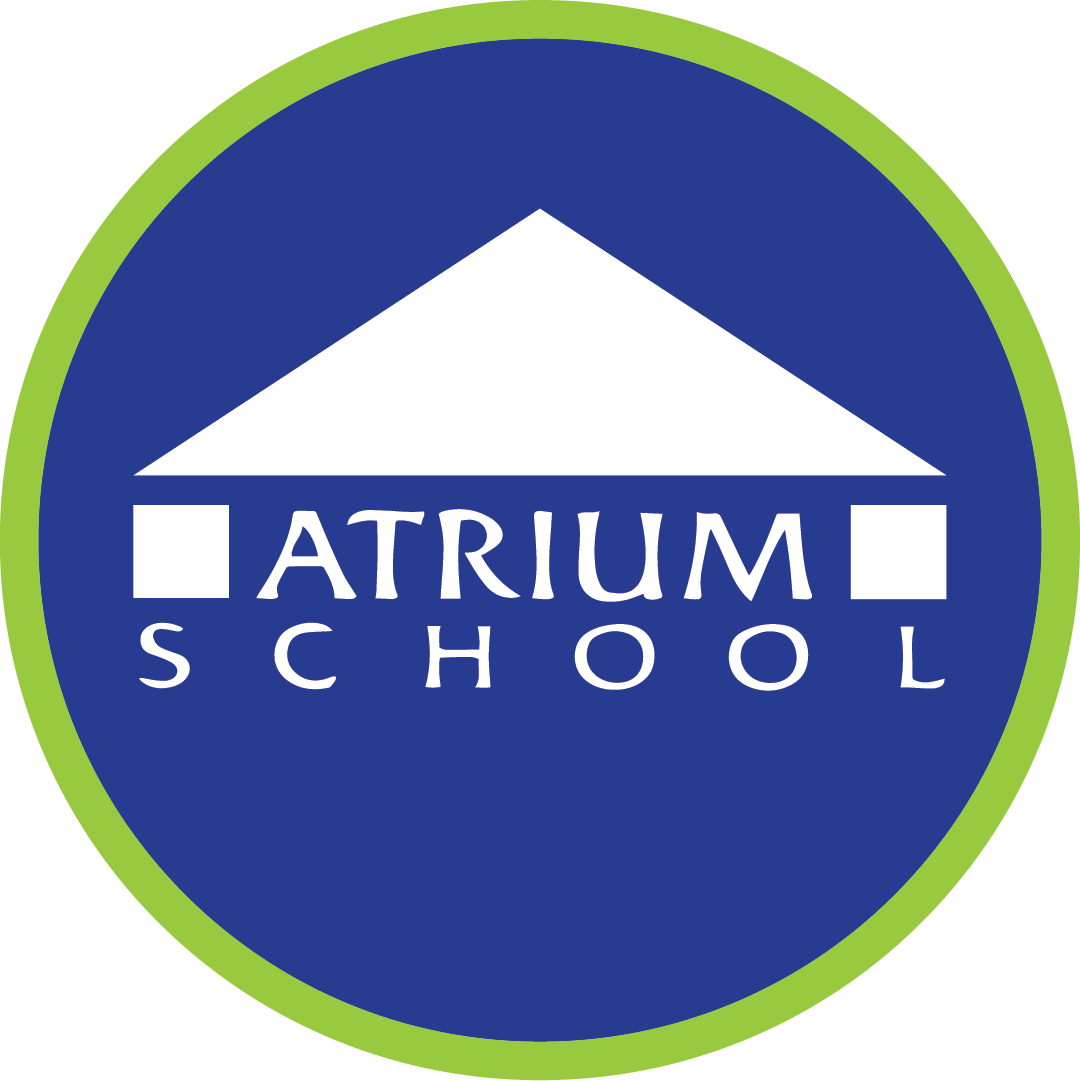Climate Studies Combine Multiple Disciplines
Fourth and fifth graders recently completed their climate study research projects, a research study that integrates their science, reading and writing curricula with an element of engineering. The students began by learning the difference between climate and weather, and ended by creating a model of a house designed for a particular climate in tandem with writing a five-paragraph research essay about the effect of climate on lifestyle in their specific geographic location.
Students began the project by learning the distinction between weather and climate, said fourth grade teacher Nia Lutch. “In theme, students had a science unit to learn about the science behind weather and climate. Topics covered included the phases of matter, air masses, convection currents, precipitation trends, how to find air masses, and what happens when air masses meet."
She continued, "We talked about the different climate types and how some aspects of lifestyle, such as clothing and food, are related to climate type. We studied some houses around the world and discussed how the environments in which people live influence their decisions about how to build shelters.”
As they learned about climate, students studied thesis statements and paragraph writing in their writing class. Students wrote three-paragraph persuasive essays on varied subjects with clear, articulate thesis statements before building up to a five-paragraph research essay exploring how climate affects lifestyle in their chosen location. At the same time, they studied features of nonfiction texts to launch their research for the essay.
While researching their climate and writing their essays, students were also designing and building a shelter for their location and climate type. Some students chose a style of house located in a specific climate, while others chose a climate and then built an appropriate house. For weeks, students were creating shelters out of recycled materials, building houses from Colombia to Indonesia, suited for myriad climates.
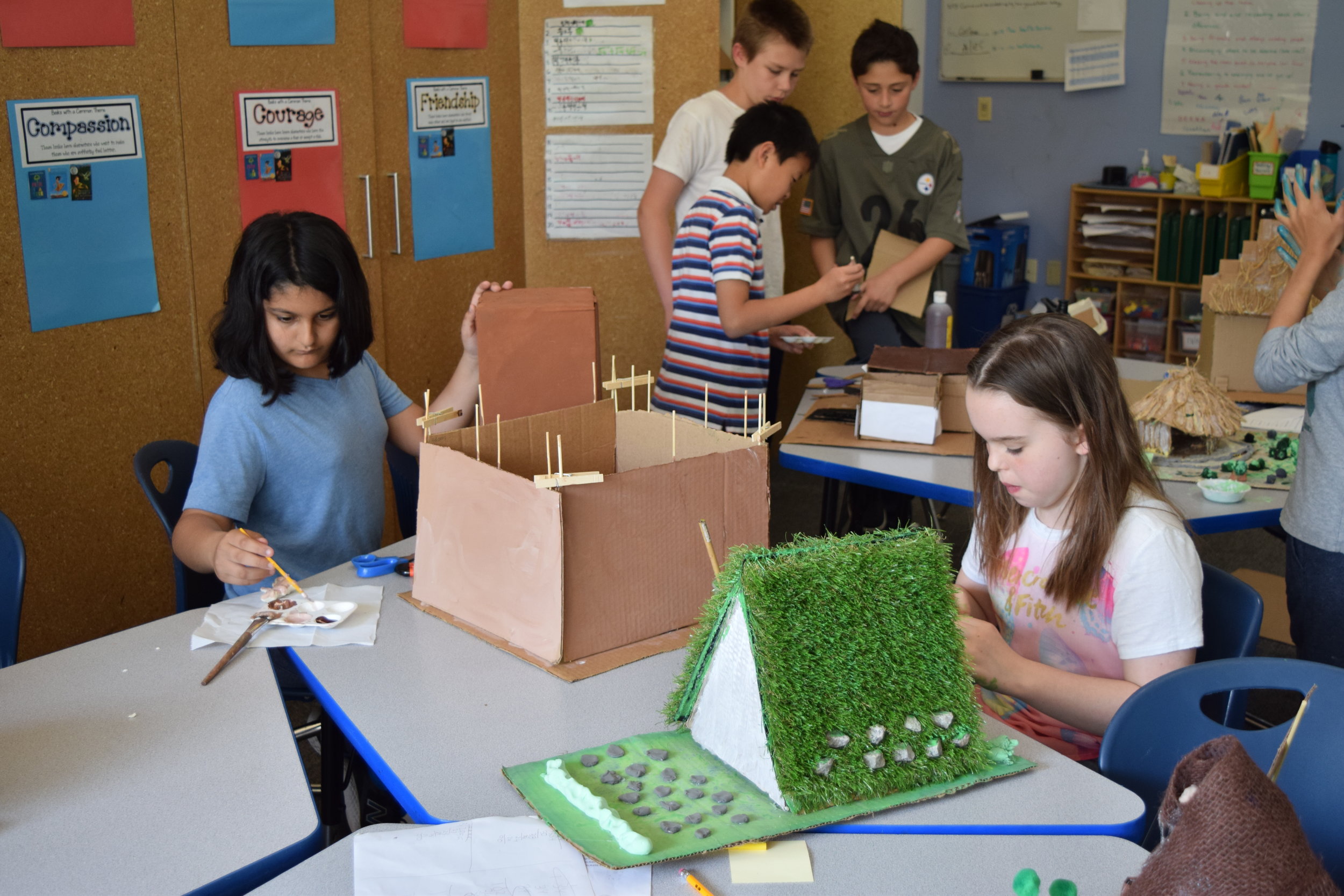


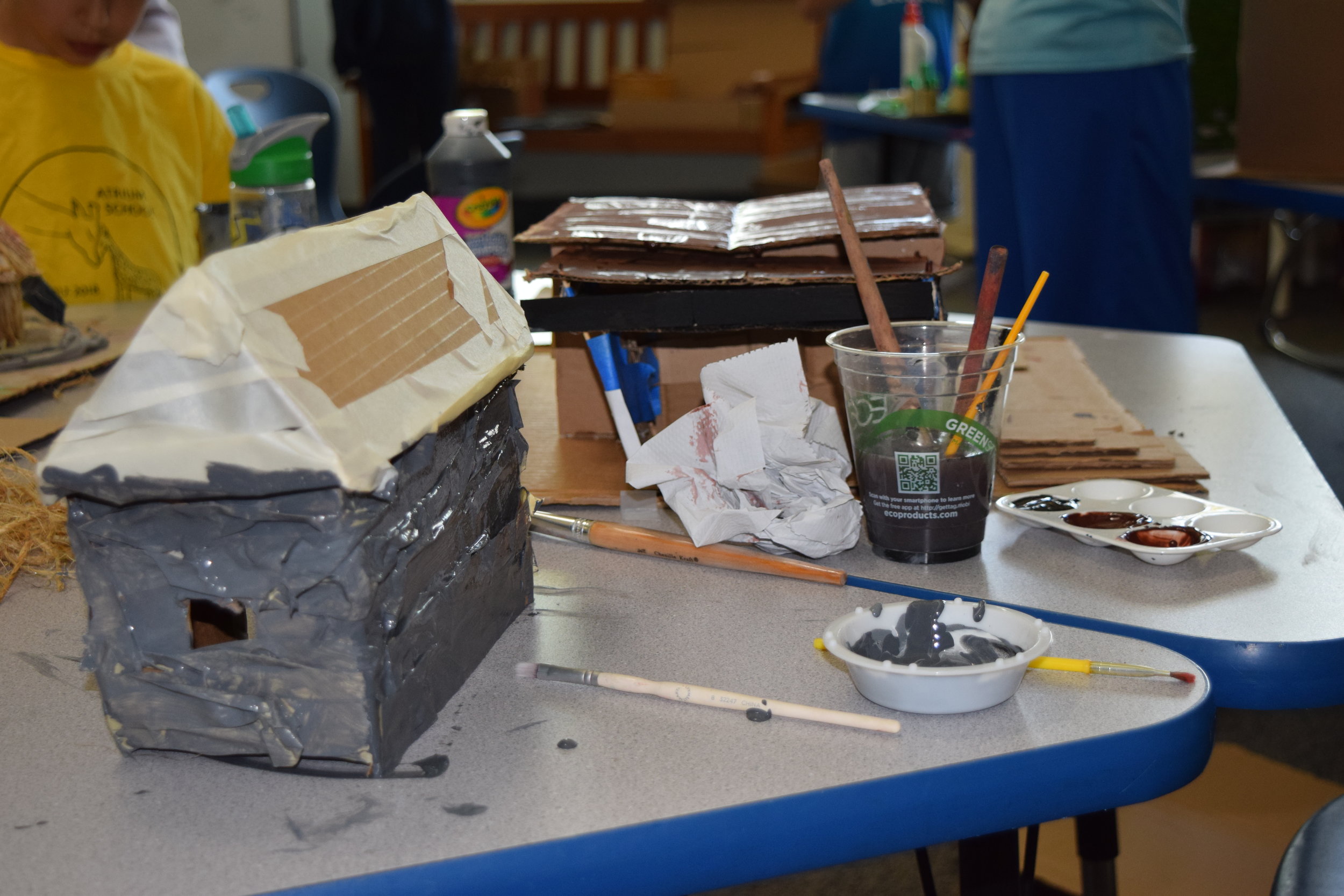


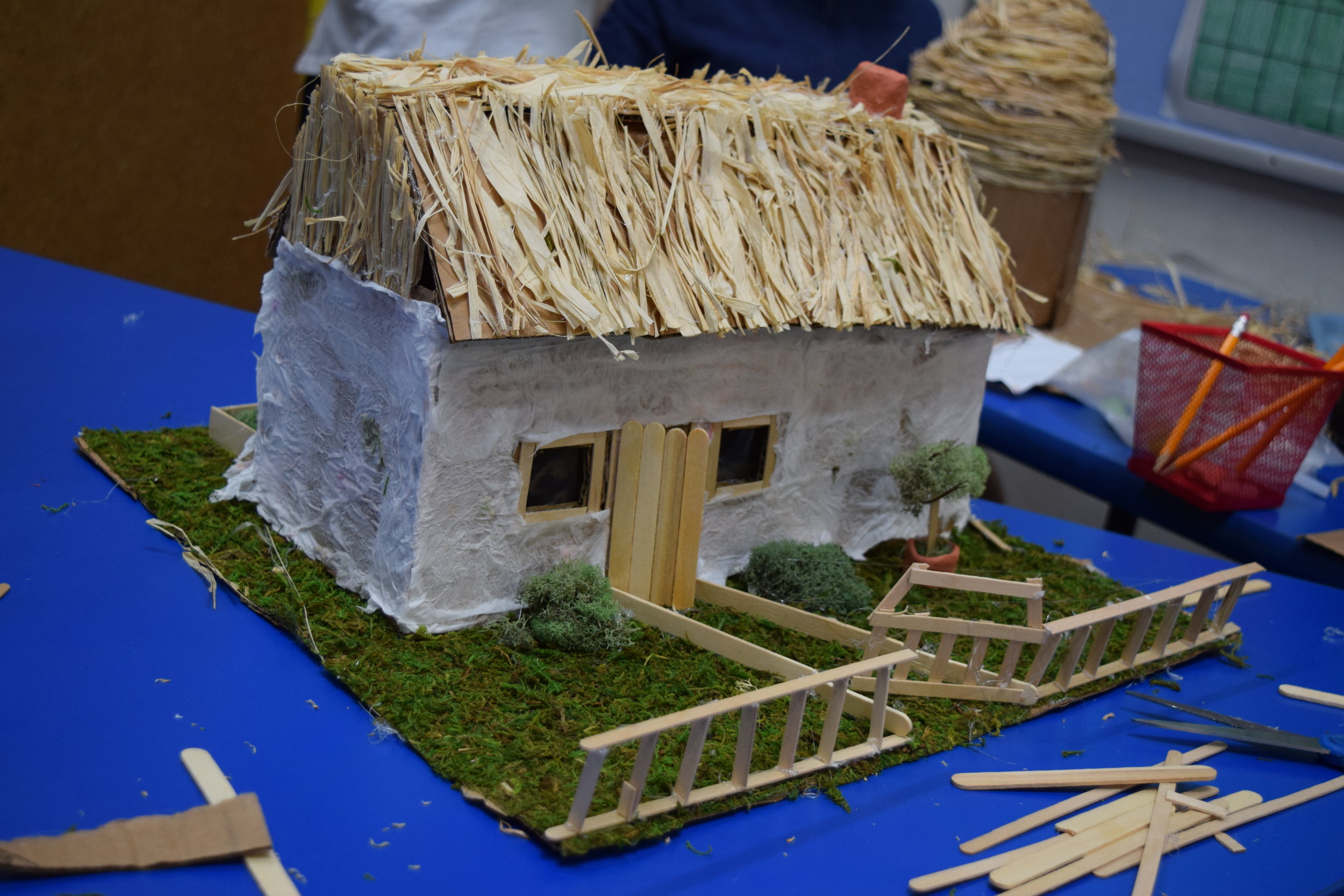

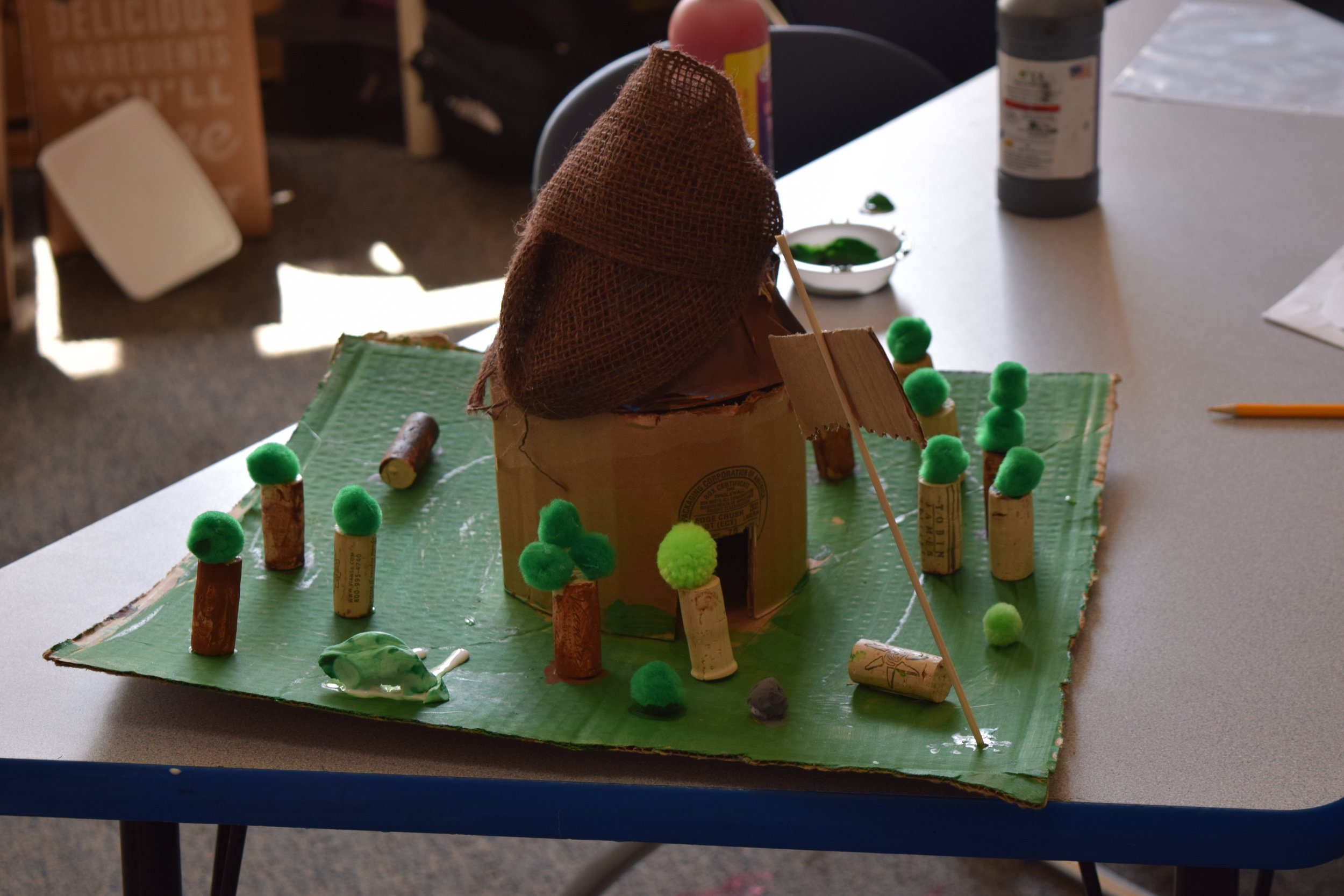
The culmination of the project was the Climate Expo, during which students displayed their houses with their essays to their fellow students and families. At the Expo, fourth and fifth graders were able to speak passionately about their houses, as well as the effects climate had on housing, clothing, jobs, work, and food in their chosen location.
Jonathan chose Mongolia as his climate, explaining, “People in Mongolia live a nomadic lifestyle, so this house is easy to carry and is portable. Two people and a camel can carry it. It’s made of animal skin, bamboo and wood. They move it almost every day.”
Camilo chose a Gasho house from Japan. “It looks like hands held together in prayer,” he said. “People have an expectation that when it rains or snows that the rain will go through the thatch, but the thatch is thick enough that it drips right off; it’s also at a 60-degree angle, so that helps it fall off. The thatch and the hearth keep it warm, and keep the bugs out.”
Molly built a houseboat from the Phillippines. “It’s in the water because there’s so much flooding you can’t be on land. Because the Phillippines is a poor country, there are not a lot of resources, so people use the wood cut from trees. They make blankets out of grey cloth to ward off evil spirits. This house is safer when the typhoons hit because if it rains and the water rises, you can loosen a string and cover the boat. It can also move around to go to markets or go fishing.”
Avery made an adobe house from New Mexico, saying, “It’s made entirely of clay and sticks. Clay is a natural resource. They have 297 days of sun on average every year and it’s such a hot and dry climate that they make walls of solid clay that are two to two and a half feet thick. You can’t do that with normal walls. It keeps the cool air in.”

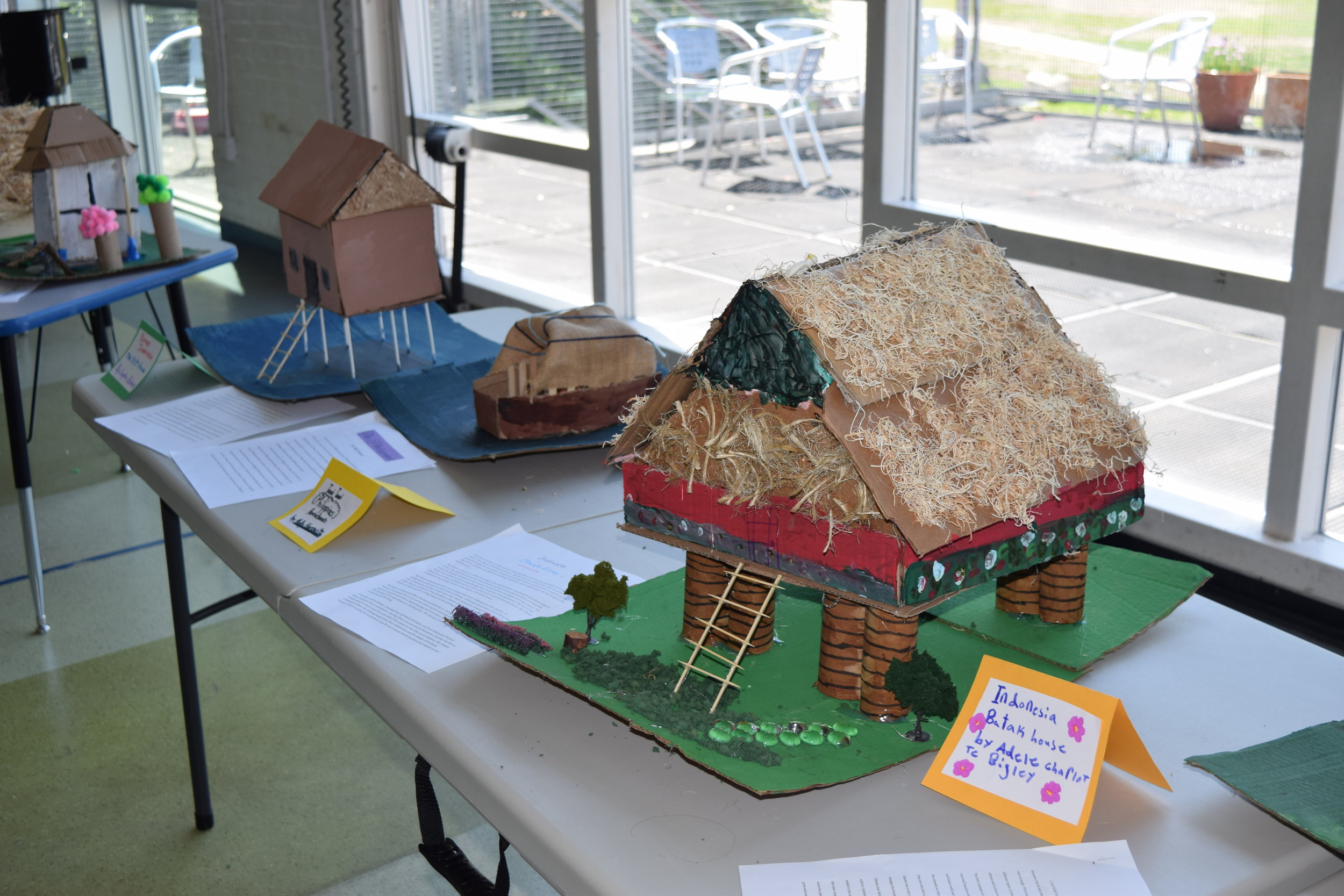
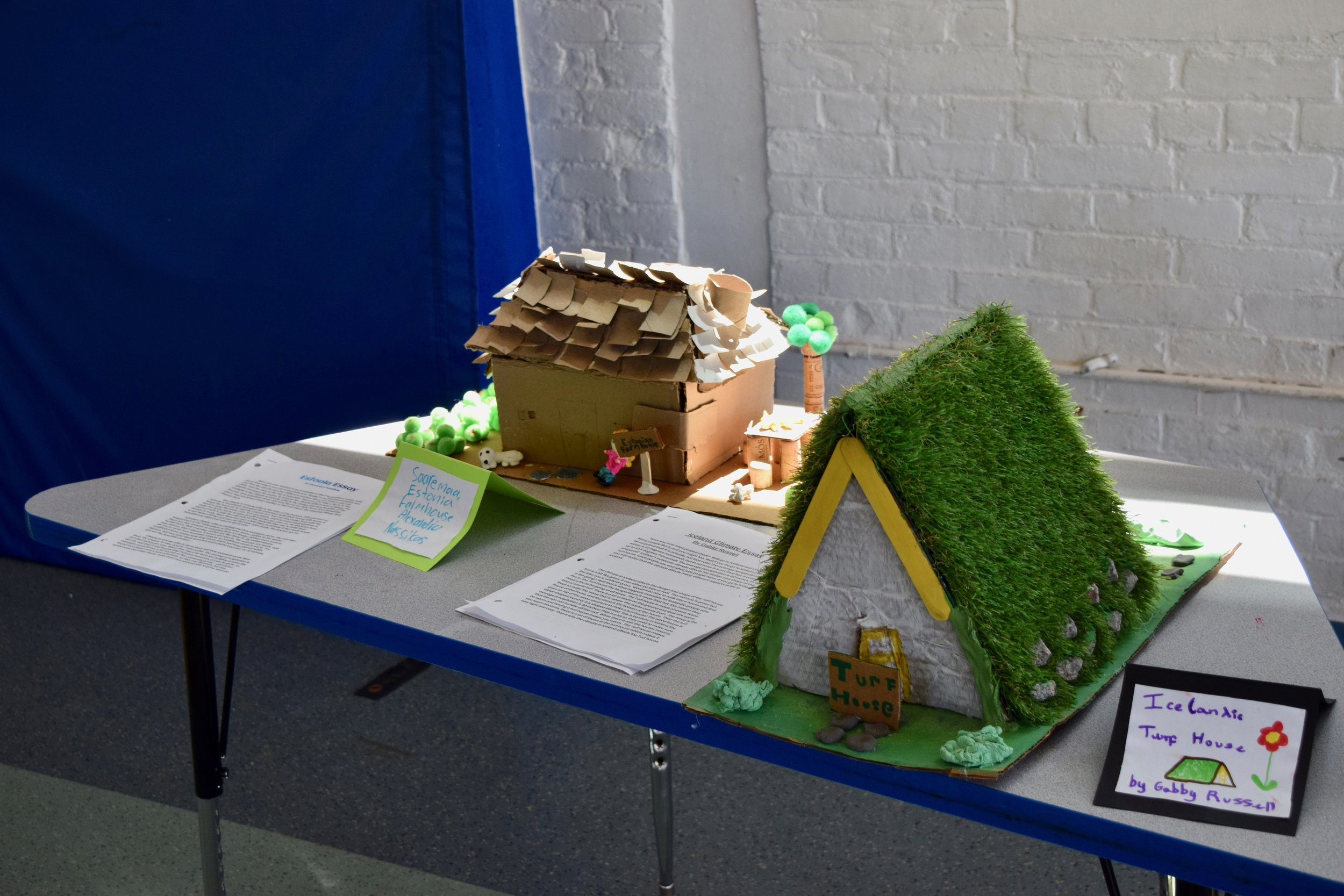
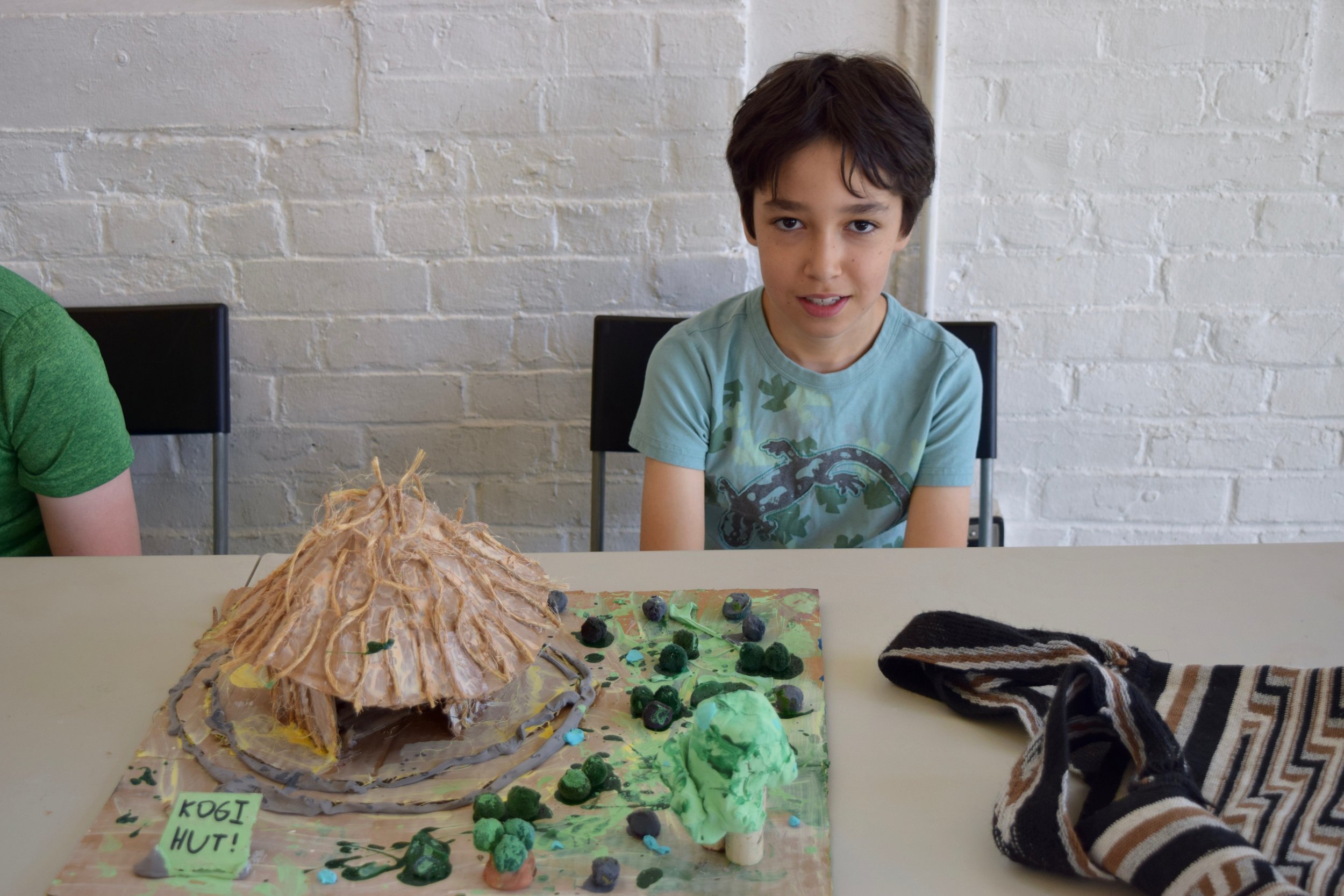
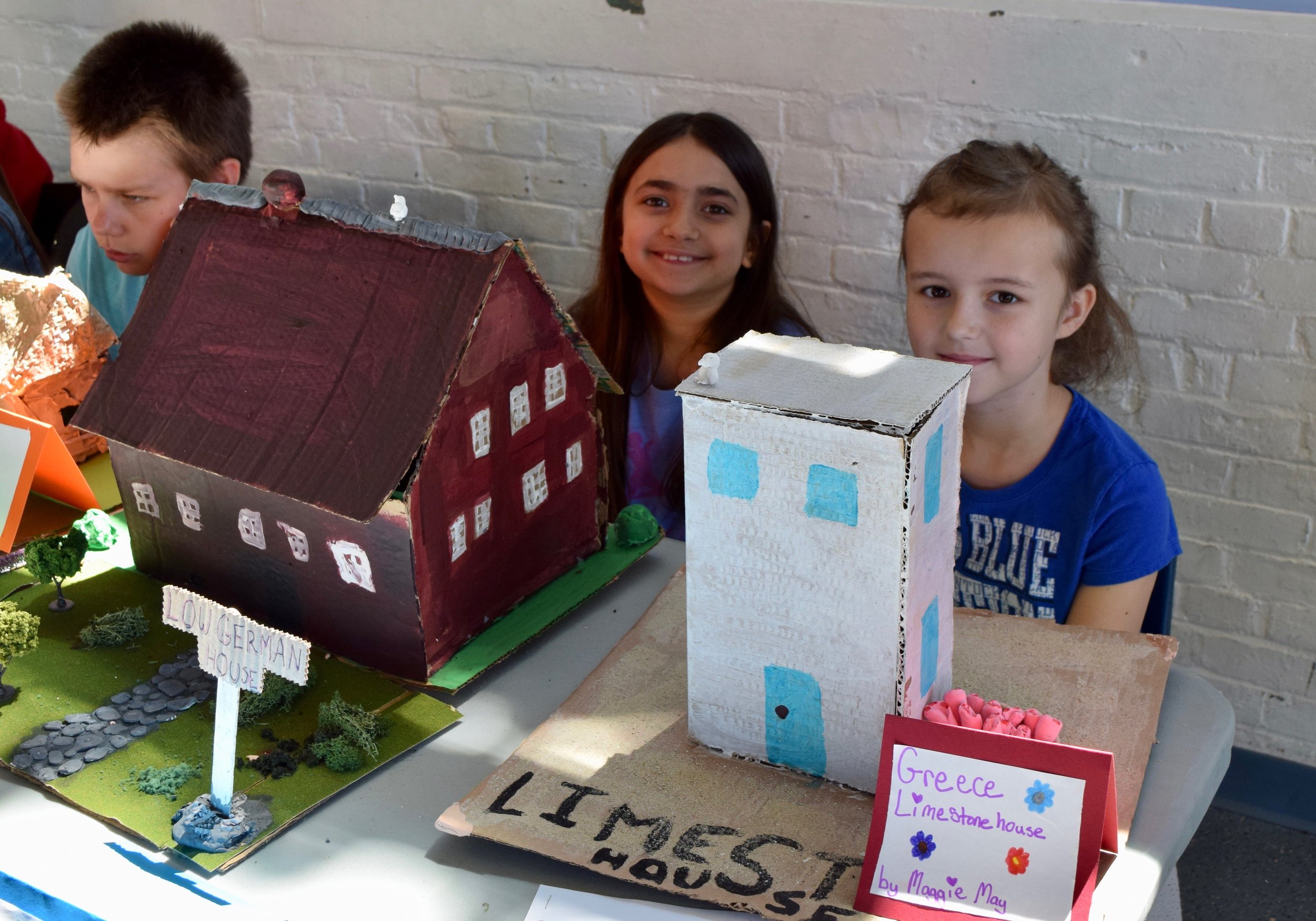

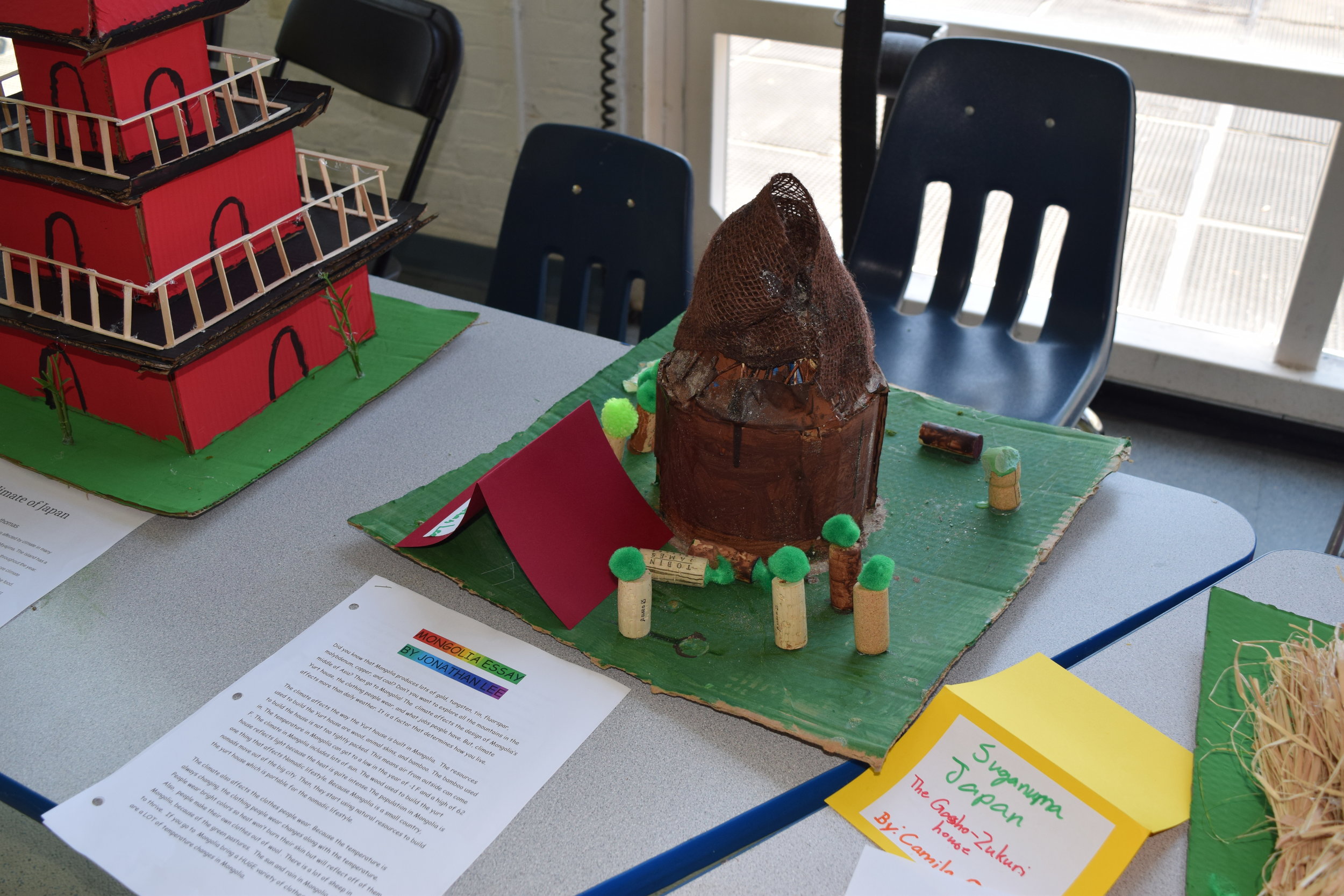
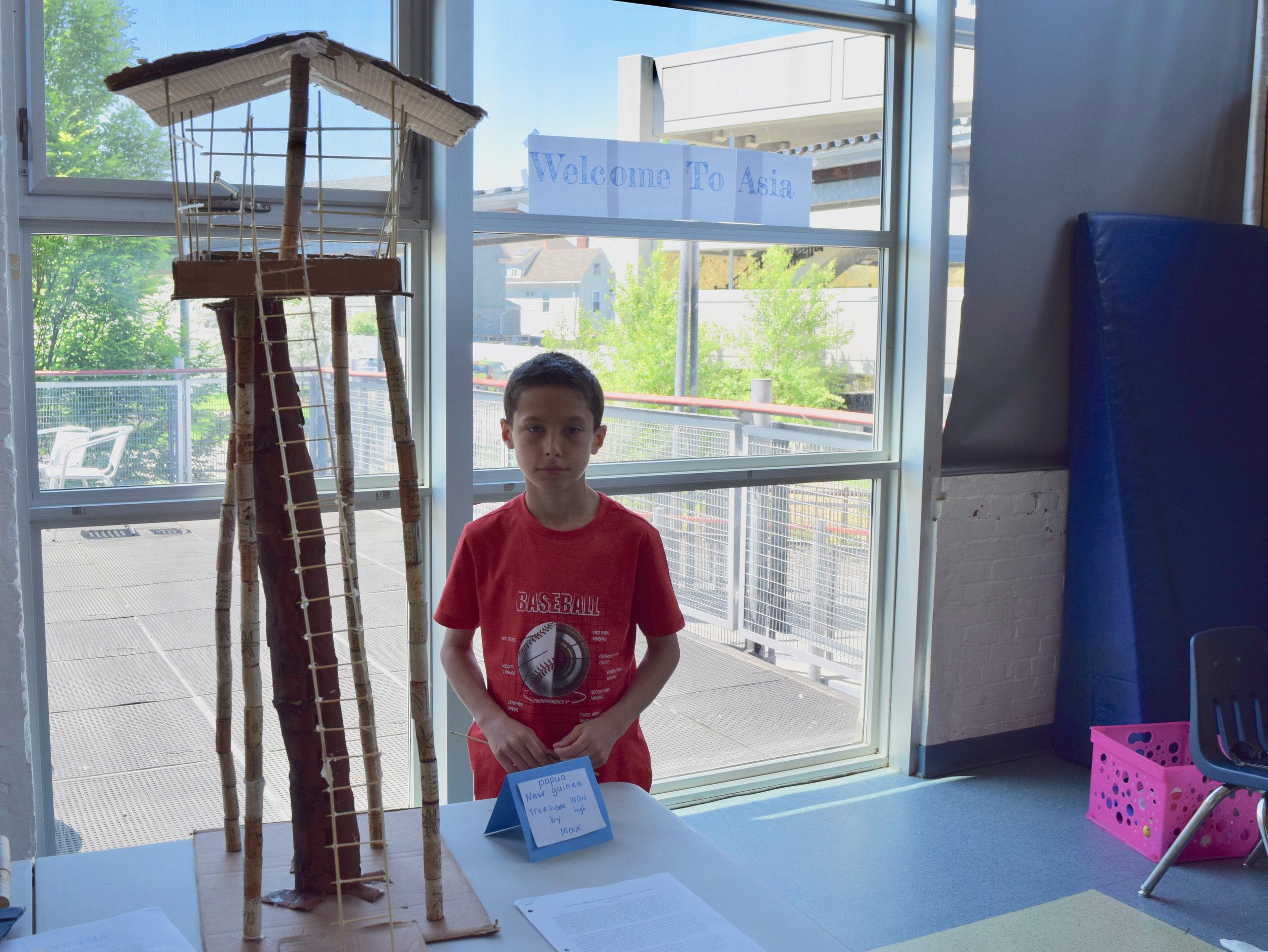
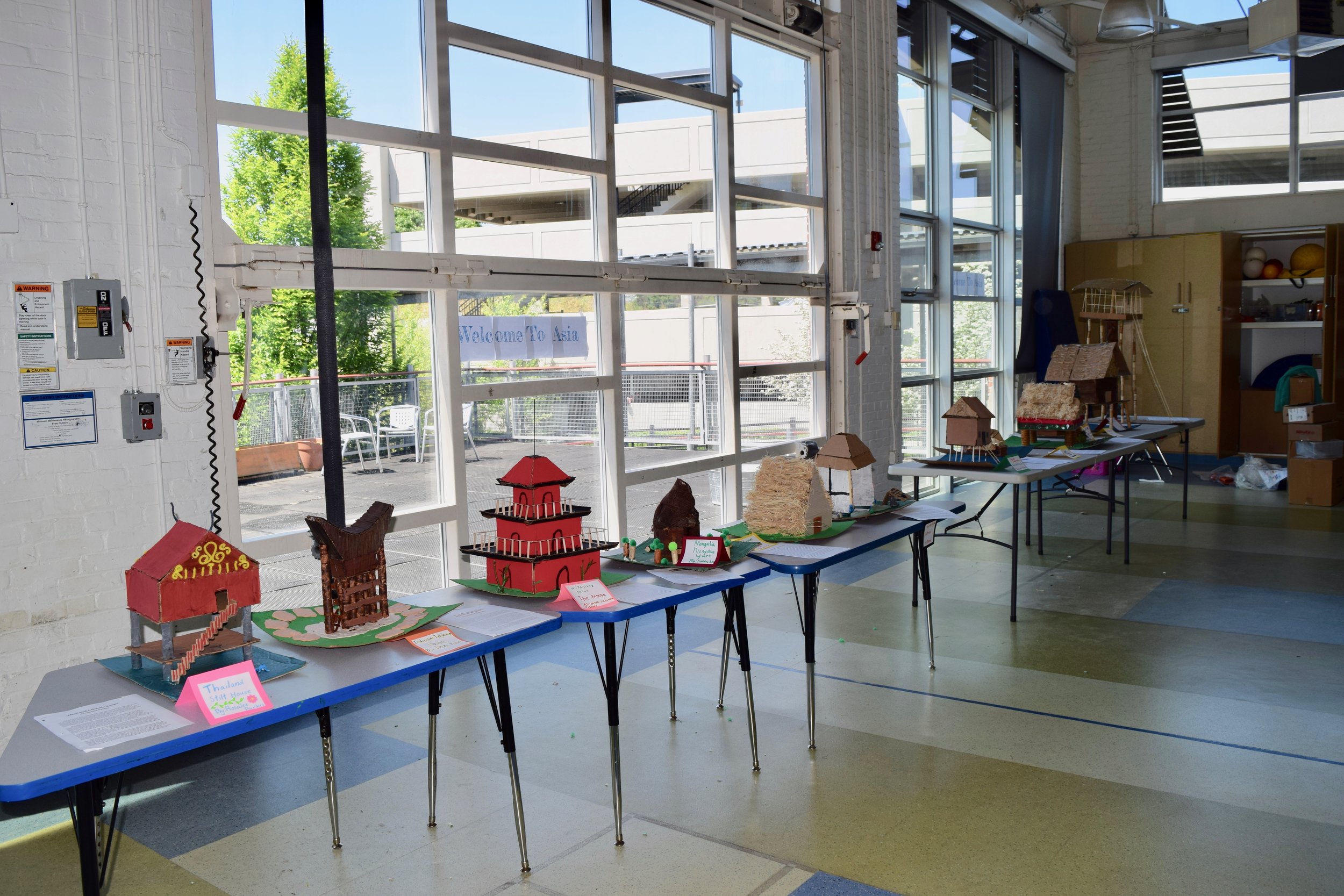

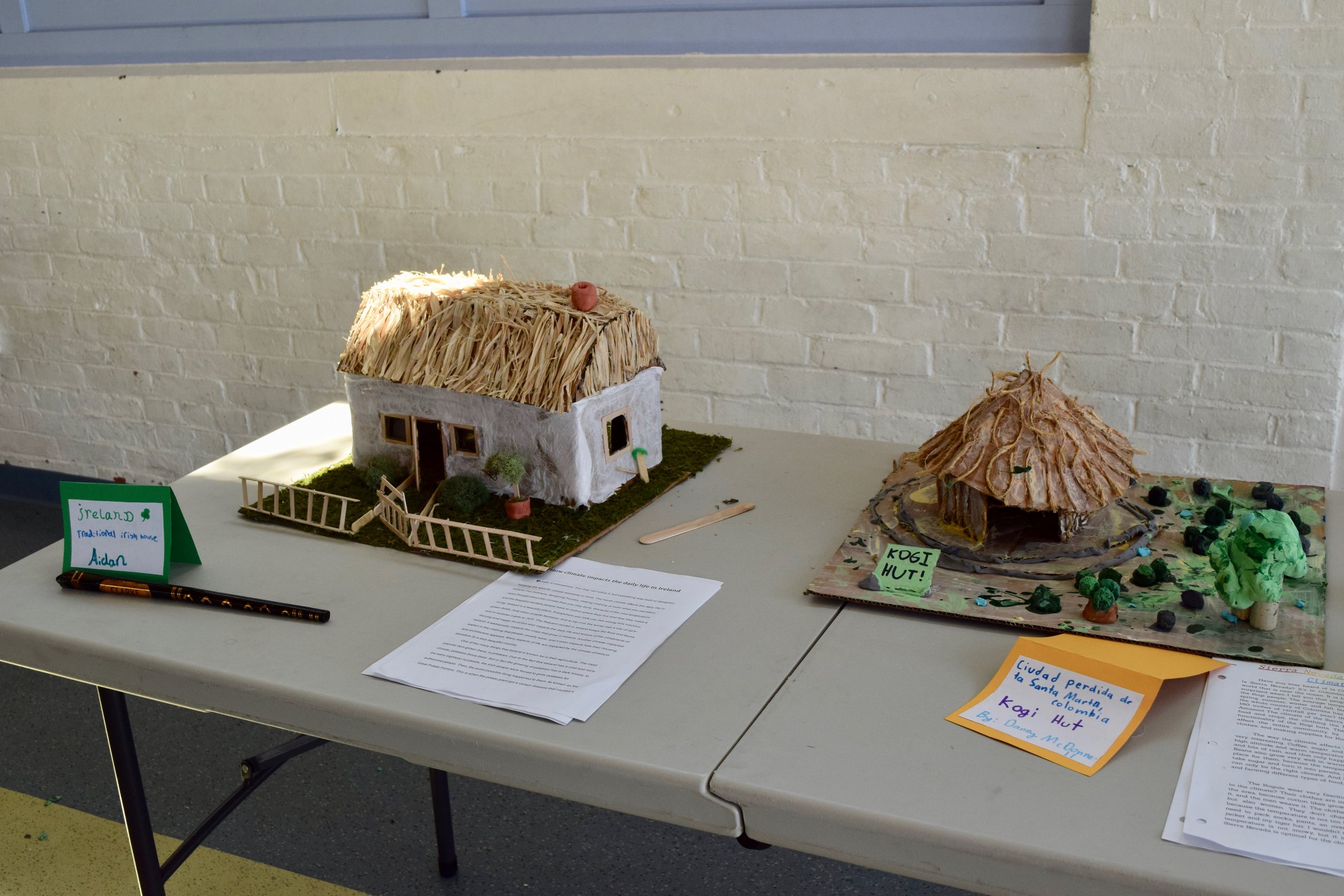
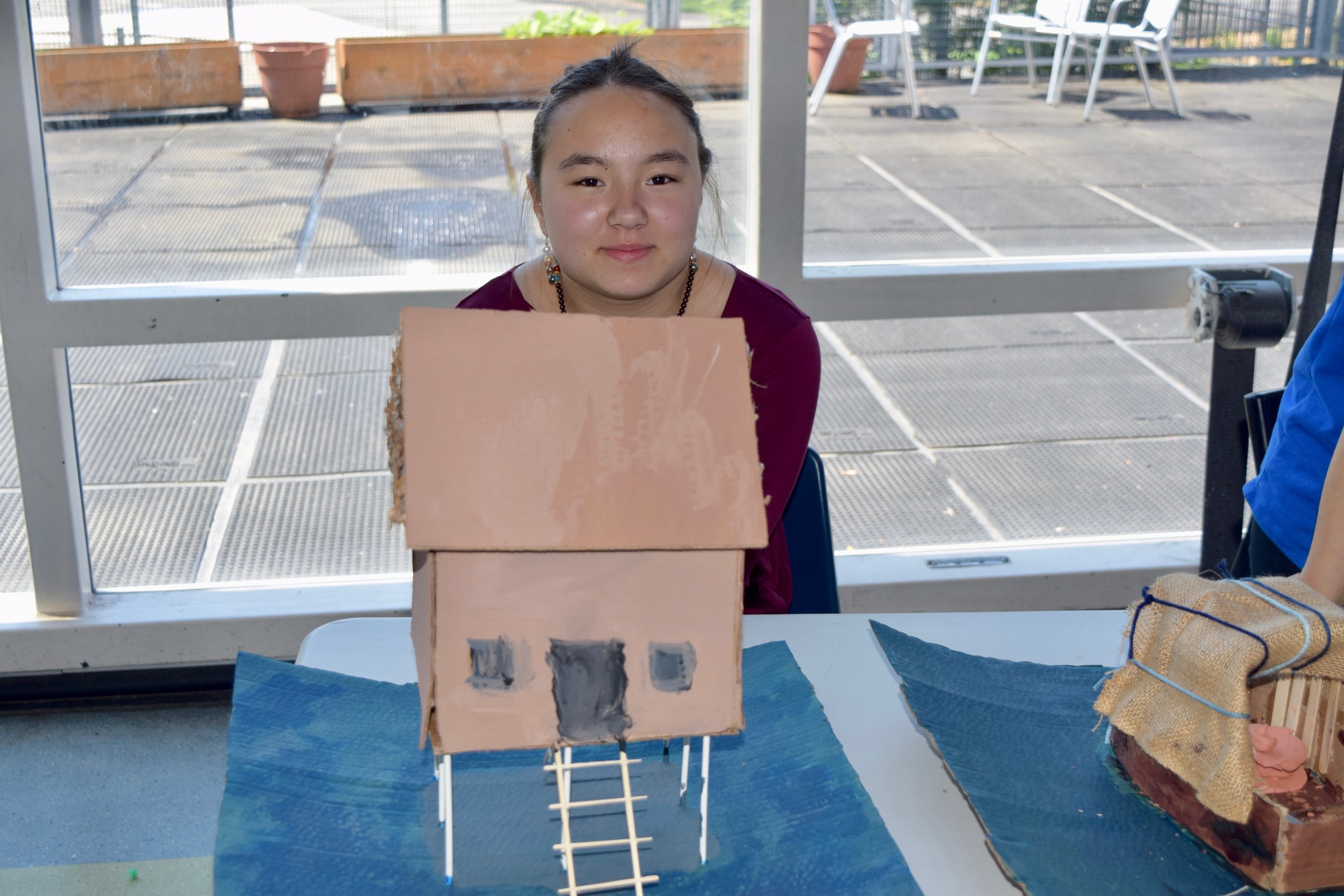
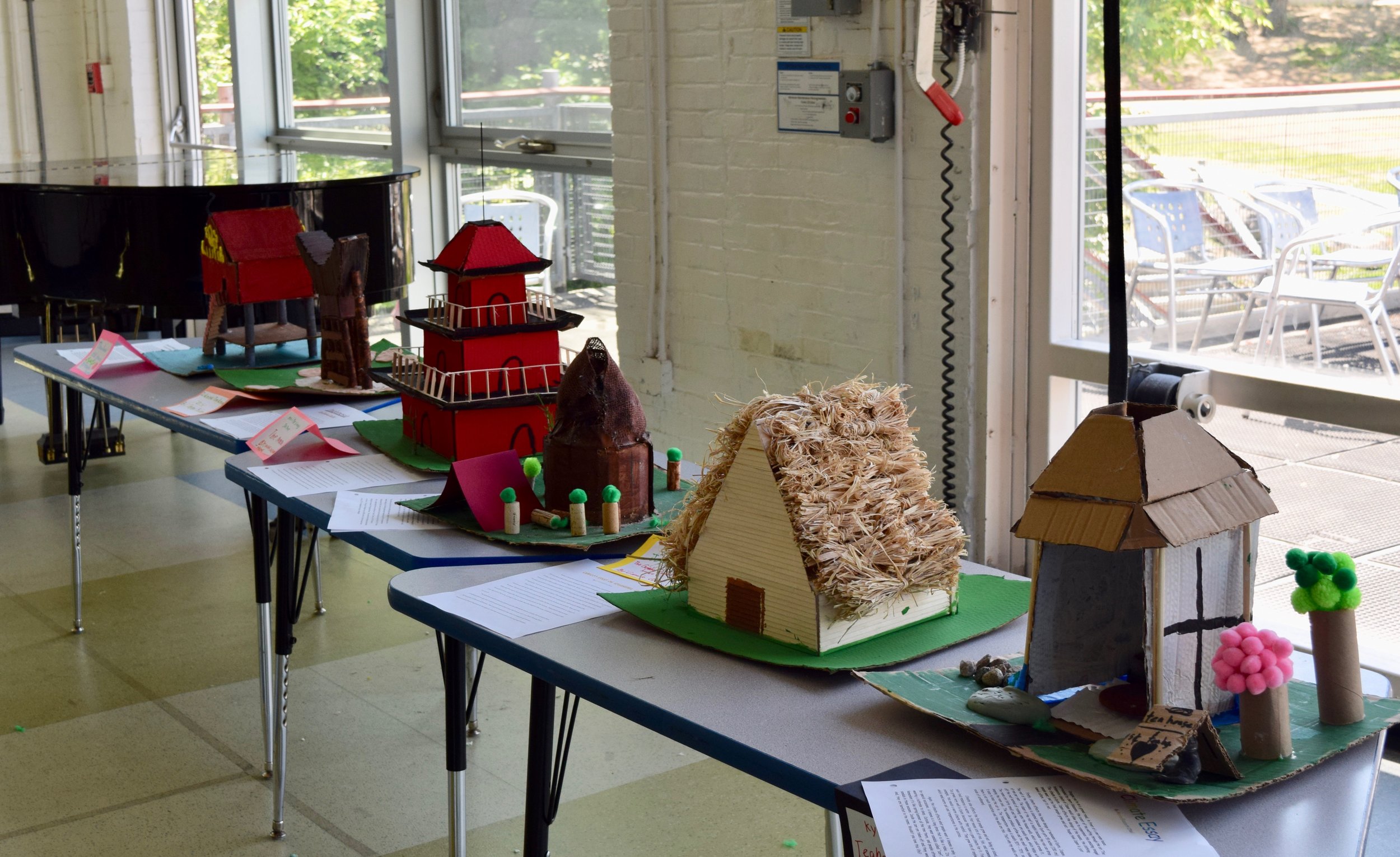
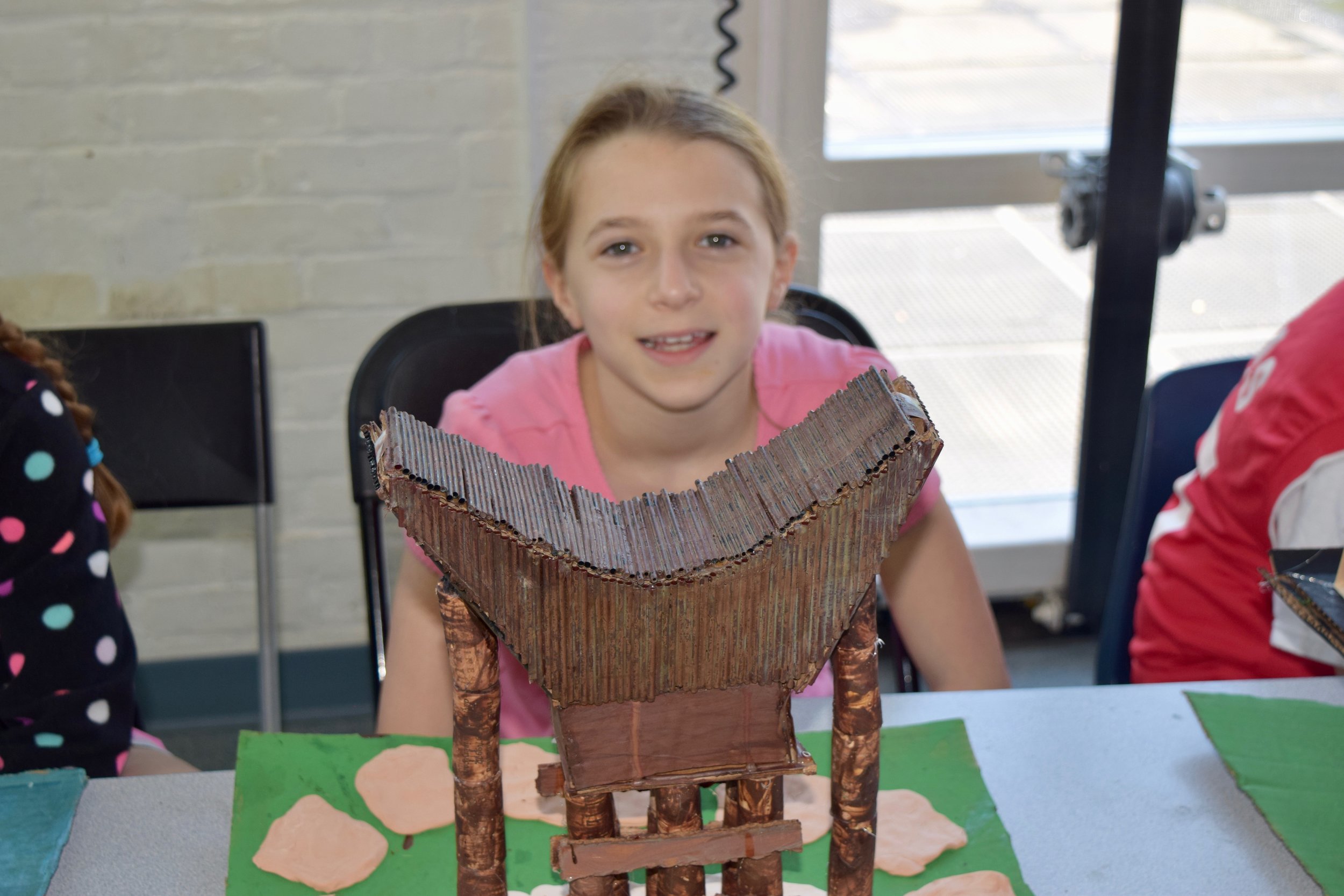

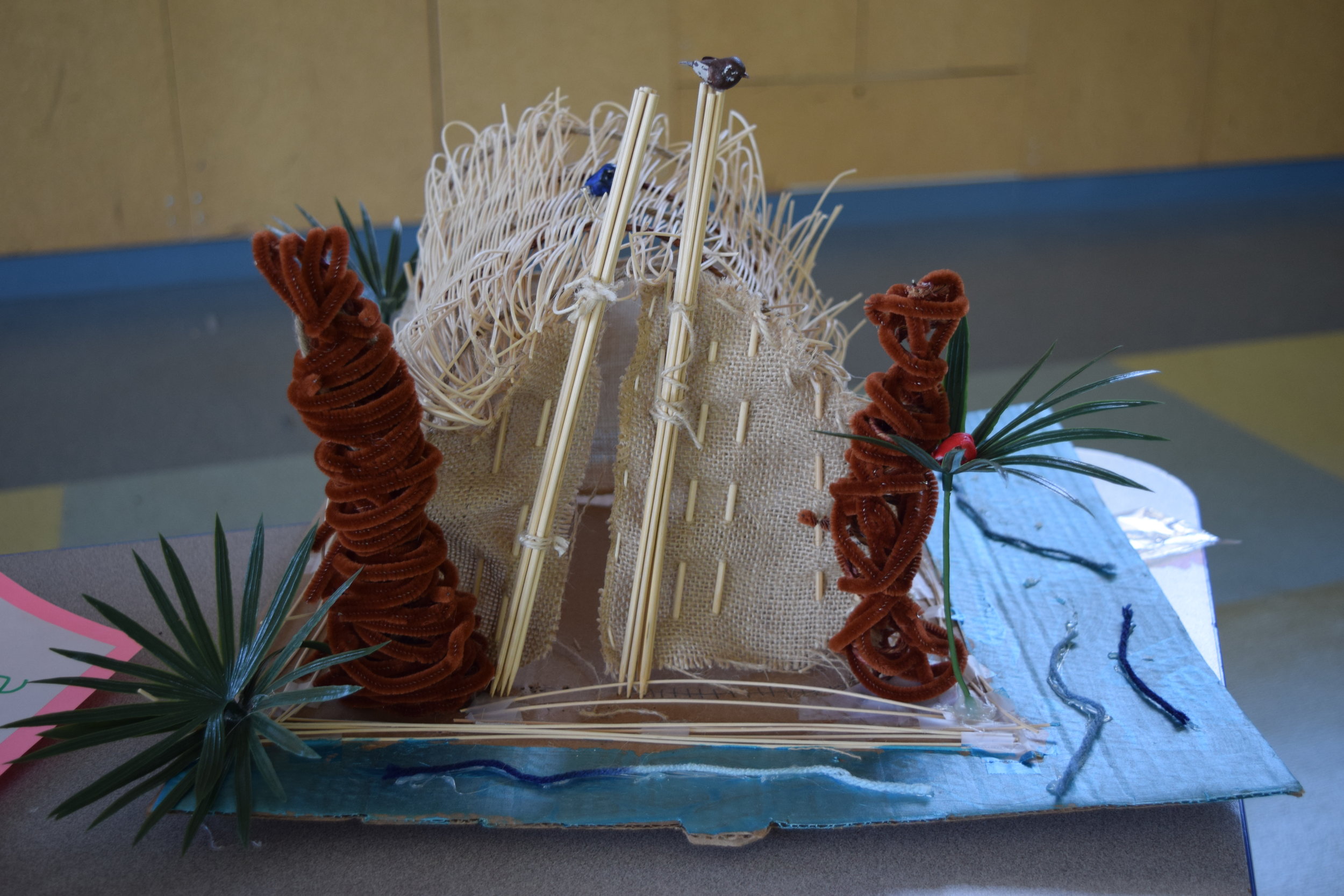
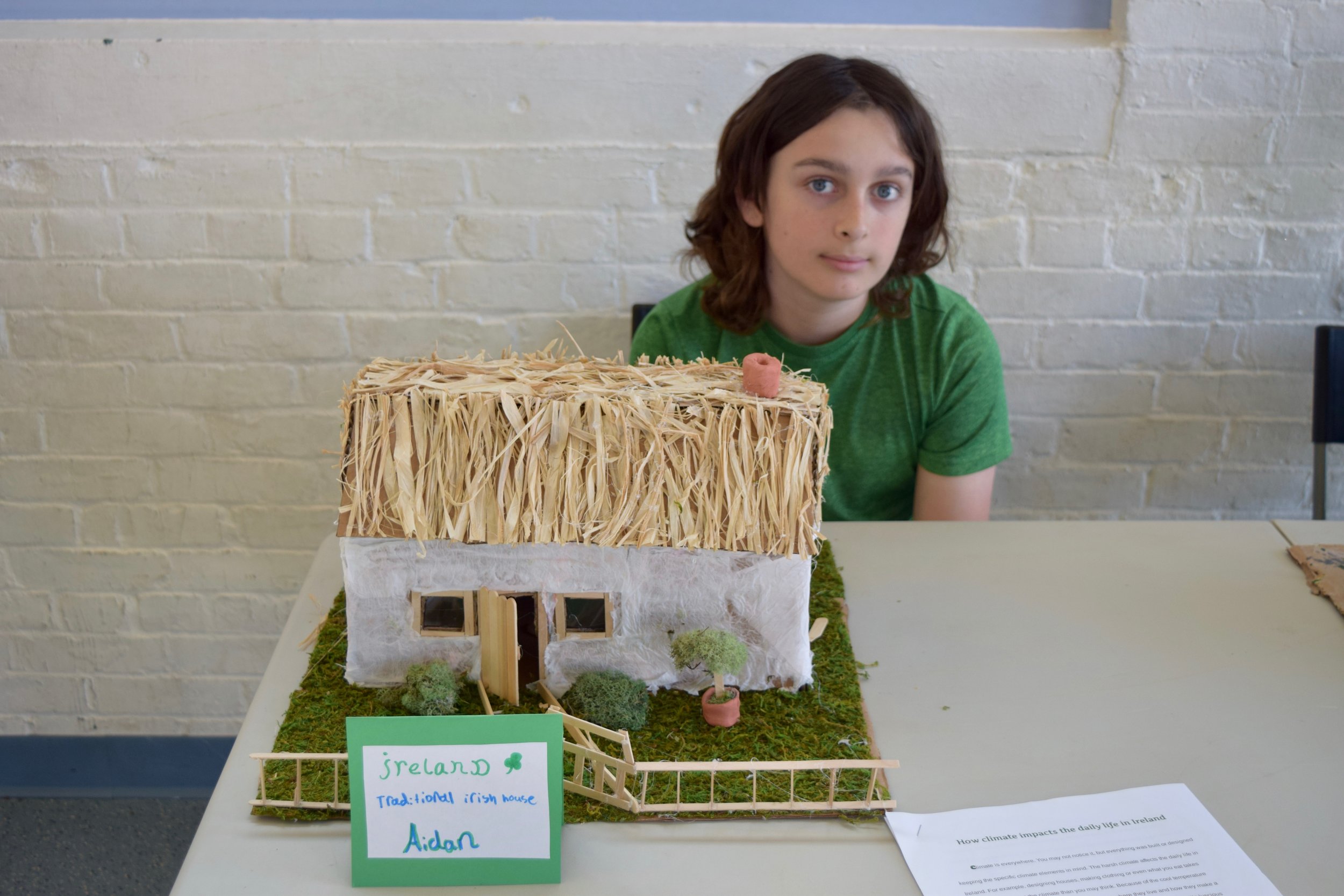
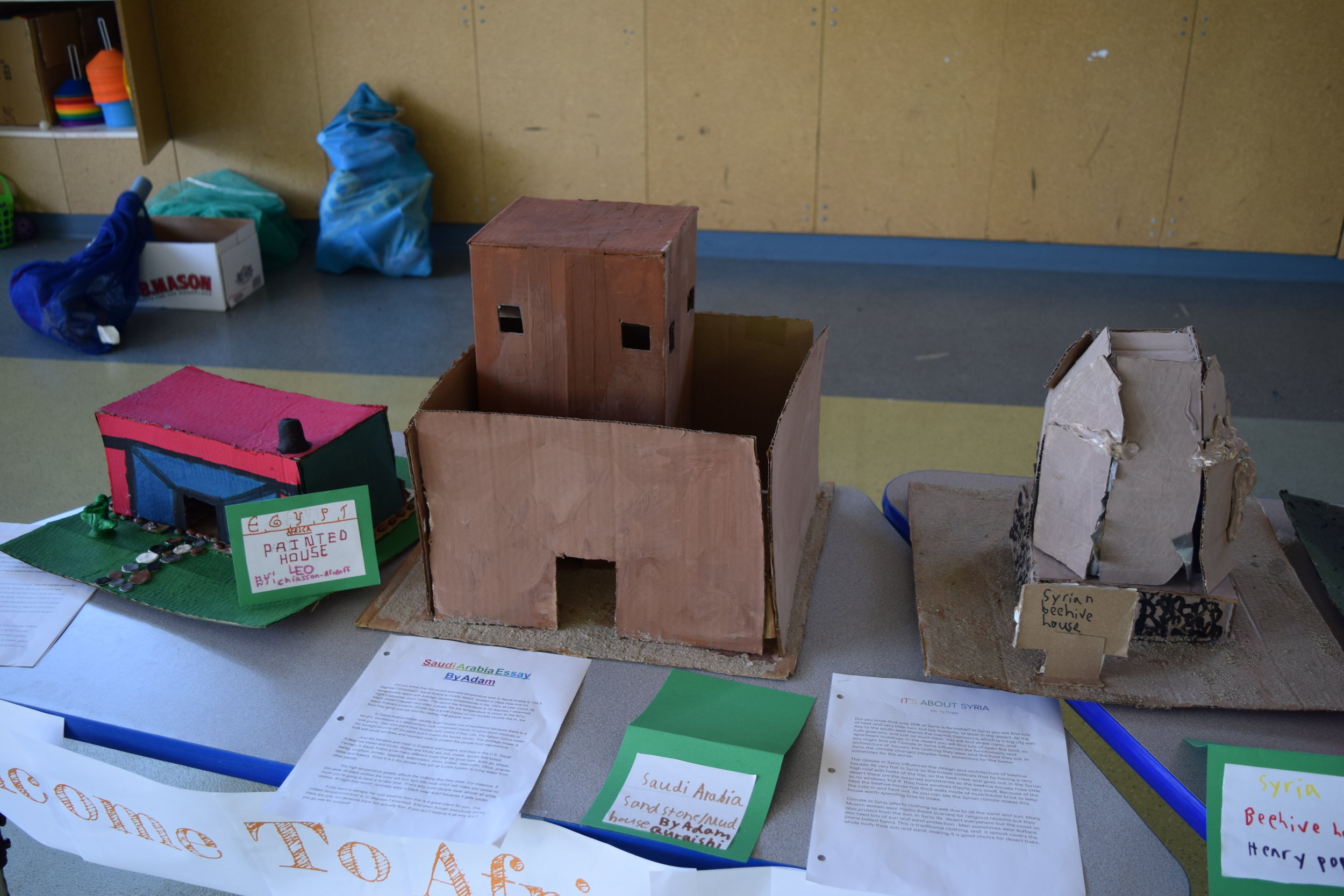
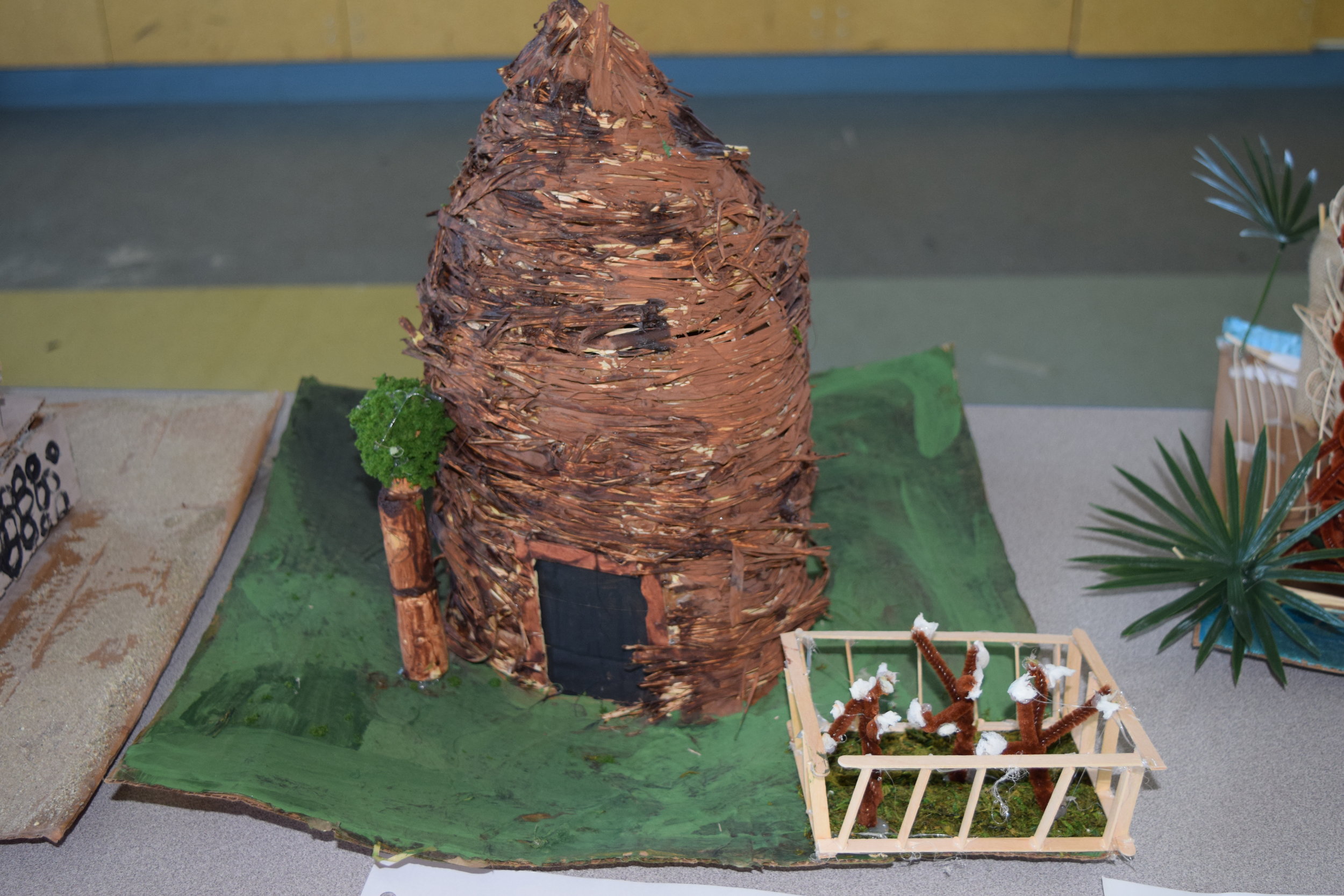
At the Expo, students were able to talk at length about the effects of climate on various aspects of life around the world. Nia said, “By the end of this unit, each child became an expert on his or location and how climate type is related to features of a house. As teachers, it is rewarding to see the kids making connections across subject areas and becoming experts on a topic.”
